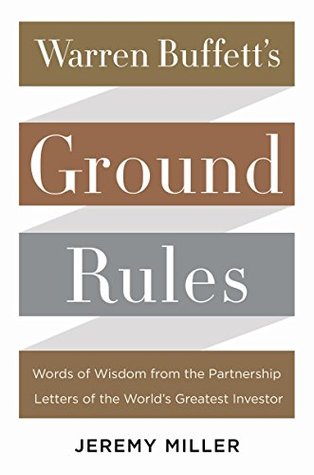More on this book
Community
Kindle Notes & Highlights
Read between
April 13 - April 19, 2025
Since the 1970s, Buffett has been saying that his favorite holding period is forever.
However, once BPL’s assets grew beyond what his investment ideas could absorb, Buffett stopped accepting new partners.
If anyone can be thought of as Buffett’s mirror opposite during the Partnership years, it’s Jerry Tsai. Both men started their investment operations in the second half of the 1950s and both got out as the ’60s came to a close, but they shared little else, especially when it came to their approach, personal results, and the results of those who invested with them. If Buffett was kissing the babies, Tsai was stealing their lollipops.
At the end of the Partnership years he “passed” in a way that was admirable and true to his principles. He didn’t continue the Partnership into bonds, he didn’t go to cash; he simply stopped playing. He took his ball and went home.
My mentor, Ben Graham, used to say, “Speculation is neither illegal, immoral nor fattening (financially).”
The Partnership was right for Buffett for a time, but now he was ready to move on to a better, more equitable structure. He later recalled the intense internal pressure he was feeling at the time.4 He never took a performance fee again. At Berkshire, he takes a modest salary and is otherwise directly in alignment with his fellow shareholders.
In investments, as with most things with Buffett, integrity is what counts first. This was as true then as it remains today.
You have to love how he describes the types of managers he seeks out for Berkshire: “We look for three things: intelligence, energy and integrity. If they don’t have the latter, then you should hope they don’t have the first two either. If someone doesn’t have integrity, then you want them to be dumb and lazy.”
If you are going to pick someone else to manage your funds, you must have a firm belief in their integrity and their ability as well as a solid understanding of their process.
The end of the Partnership was just the end of the beginning for Buffett. In 1970 he took on the title of Berkshire’s chairman and CEO. By transitioning from a partnership to a corporation, he was evolving to a higher form. In it, he had gained a controlling interest in an entity with permanent capital and the ability to move that capital tax-free from one operating company to another. The Partnership mentality, however, hasn’t changed a bit. If anything, it’s gotten stronger.
As Buffett sees it, shareholders, just like BPL partners, commingle their capital with his and together they own the assets of the corporation, just as they had owned the assets in the Partnership.
Since taking the role of chairman of Berkshire, he collects a modest salary but doesn’t take a performance fee or otherwise benefit in any way that is disproportionate to his interest as a shareholder.
Bill Ruane reportedly once said that when it comes to investing, Graham wrote the Bible and Buffett wrote the New Testament.2 That sums it up beautifully.
Twenty years after the Partnership ended, the door to “just cheap” was closed permanently when he summarized his evolved view by saying, “It’s better to buy a wonderful business at a fair price than a fair company at a wonderful price. Charlie understood this early; I was a slow learner. But now, when buying companies or common stocks, we look for first-class businesses accompanied by first-class managements.”
Buffett converted corporate assets of poor quality into capital, which in turn was converted back into assets that were more productive. At Dempster, this meant converting unproductive inventory into highly productive securities. At Berkshire, this meant converting low-returning assets tied up in textiles and redeploying them into highly productive insurance and banking assets.
Perhaps the most remarkable thing of all is the internal consistency throughout all of his letters, despite the evolution in his methods. No ideas are later nullified or in need of revision. There is really nothing about a 1957 letter, for example, that has become intellectually inconsistent with any other letter since. Instead, ideas are supplemented, nurtured, or simply left intact.


